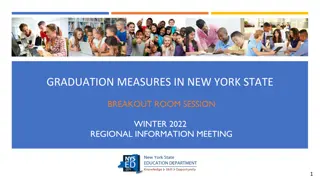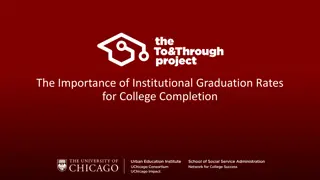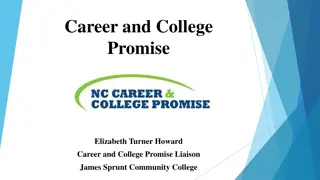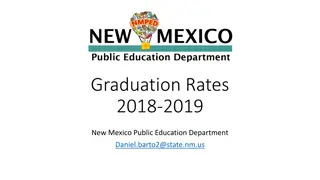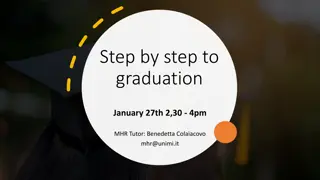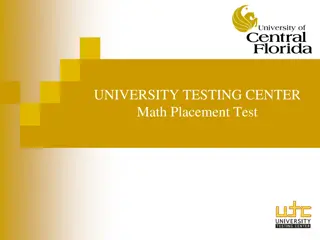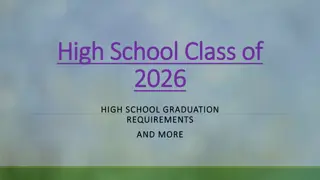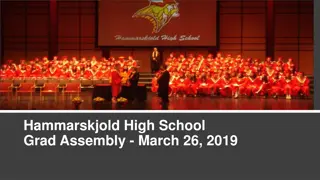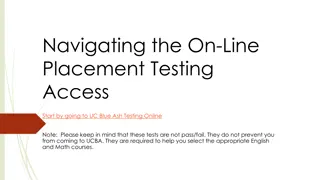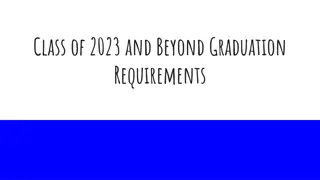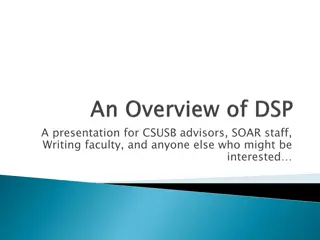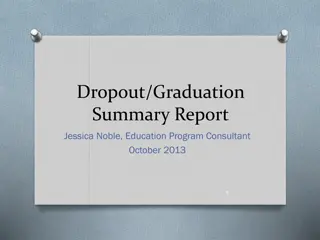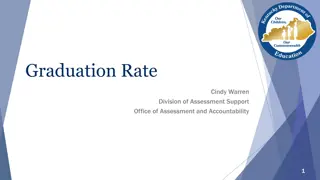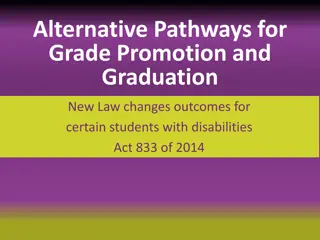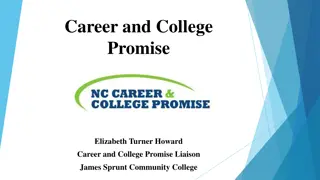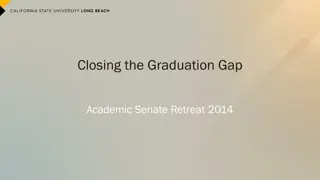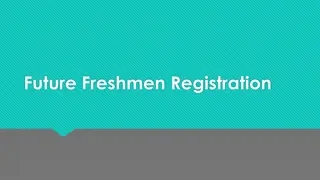Evolution of College Placement Criteria and Graduation Pathways
The Bridge to College initiative outlines a pathway for students below college-ready levels, aligning with legislative changes and high school graduation requirements. The placement agreement has transitioned from relying solely on standardized test scores to incorporating course success indicators, aiming to address college readiness challenges across education levels. The revised system has extended agreements through the Class of 2027, emphasizing a multifaceted approach to student readiness and success.
Download Presentation

Please find below an Image/Link to download the presentation.
The content on the website is provided AS IS for your information and personal use only. It may not be sold, licensed, or shared on other websites without obtaining consent from the author. Download presentation by click this link. If you encounter any issues during the download, it is possible that the publisher has removed the file from their server.
E N D
Presentation Transcript
Bridge to College: Overview and Update Articulation and Transfer Council April 2024 Bill Moore Dutch Henry Megan Luce Bridge to College Math Cascadia College Director, Bridge to College SBCTC Bridge to College English Shoreline CC
2014 Higher Education Placement Agreement Defined students to be college-ready based on their scores of 3 or 4 on the Smarter Balanced Assessment (SBA) For all 34 community and technical colleges (and EWU): SBA score of 2 and a B or better in a Bridge Course also indicates that a student is college-ready
Rationale for Placement Agreement Dissatisfaction with existing placement tools and ongoing move toward multiple measures Quality of Common Core standards and Smarter Balanced assessments Opportunity to address college readiness issues with K-12 partners
Bridge to College Courses Pathway for students scoring below college-ready on the high school assessment Jointly developed and coordinated by college faculty and high school teachers Bridge to College Initiative Web Site Ongoing professional learning support for teachers
2018 Legislative Changes Moved high school assessment to 10thgrade, affecting the placement agreement De-linked high school assessment (SBA) from high school graduation and substituted new pathway requirements
HS GRADUATION REQUIREMENTS Formalizes requirement for students to complete 1 of 8 graduation pathway options: SBA scores Dual credit courses (CHS and Running Start) Bridge to College AP/IB courses and tests SAT/ACT scores Armed Services Vocational Aptitude tests Career and Technical Education courses Any combination of other 7 options
Revised System Placement Agreement Eliminated requirement of Smarter Balanced score for placement with Bridge to College Added course success requirements for math in addition to Smarter Balanced score Extended initially through Class of 2022 (in 2023 system extended agreement through 2027)
BTC OVERALL PARTICIPATION TRENDS School Year Districts High Math Teachers 247 234 263 236 213 192 202 English Teachers 121 196 222 183 210 202 189 Schools 138 188 203 202 188 174 170 2017-18 2018 -19 2019-20 2020-21 2021-22 2022-23 2023-24 89 111 121 121 115 108 107 8
Bridge to College Statewide 21 8 11 51 27 13 11 10 18 # of Bridge to College high schools by ESD
Bridge to College Courses Collaboration: High school teachers and higher ed faculty work closely on shared teaching and learning challenges Higher Ed Use: Curriculum used in some Basic Ed and pre-college programs Higher Ed Outreach: BTC teachers work with CC faculty, meet on our campuses, observe classes 10
Bridge to College Math Curriculum Units of Study: A. Statistics B. Algebraic Expressions C. Equations D. Proportional Reasoning E. Linear Functions F. Systems of Equations G. Exponential Functions and Logarithms H. Quadratics (optional) Standards for Mathematical Practices embedded Emphasis on Social and Emotional learnings 11
Bridge to College English Curriculum Rhetorical reading and writing Modules support students from pre-reading to post-writing reflection Challenging, diverse non-fiction and fiction texts, including contemporary topics and ssues tied to local communities Emphasis on expository and argumentative writing for multidisciplinary writing 13
Ongoing Challenges How can these barriers be mitigated with our current work? Burden on students to provide transcripts Communication issues with high school and college staff Inconsistent use of high school transcripts Variations in local score reporting formats, processes
Significance of BtC Courses For colleges, a crucial outreach and communication opportunity with students who have signaled an interest in college but often don t enroll after high school. For students, an engaging and challenging opportunity that will help them be successful in their entry-level college courses For teachers, strong professional learning through a network of high school teachers along with an active partnership with higher education faculty For schools and districts, well-designed, low-cost, open-source curricula for students interested in attending college but uncertain of how well they will do there. 16
QUESTIONS? Contact: Bill Moore bmoore@sbctc.edu (W) 360.704.4346 (C) 360.528.1809 Note: All material licensed under Creative Commons Attribution 4.0 International License.







